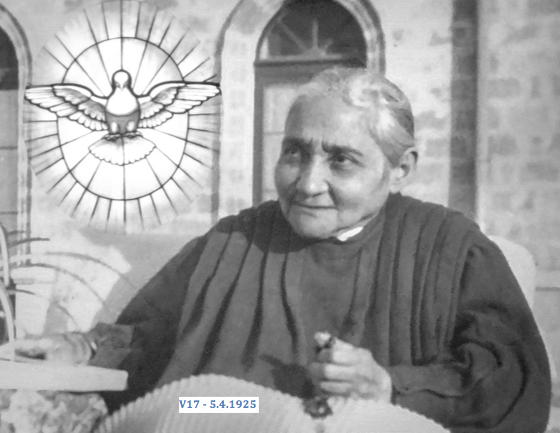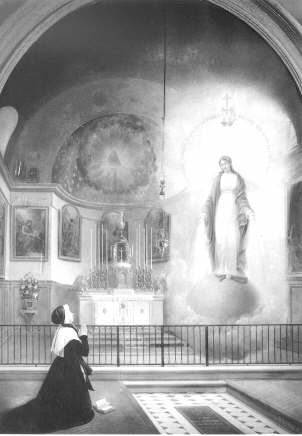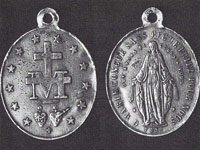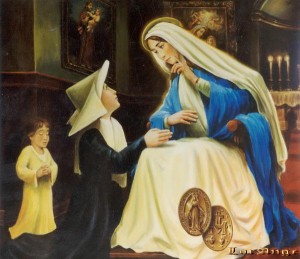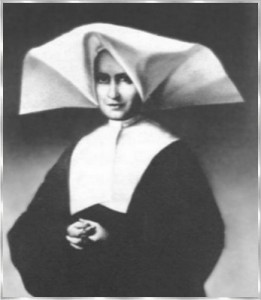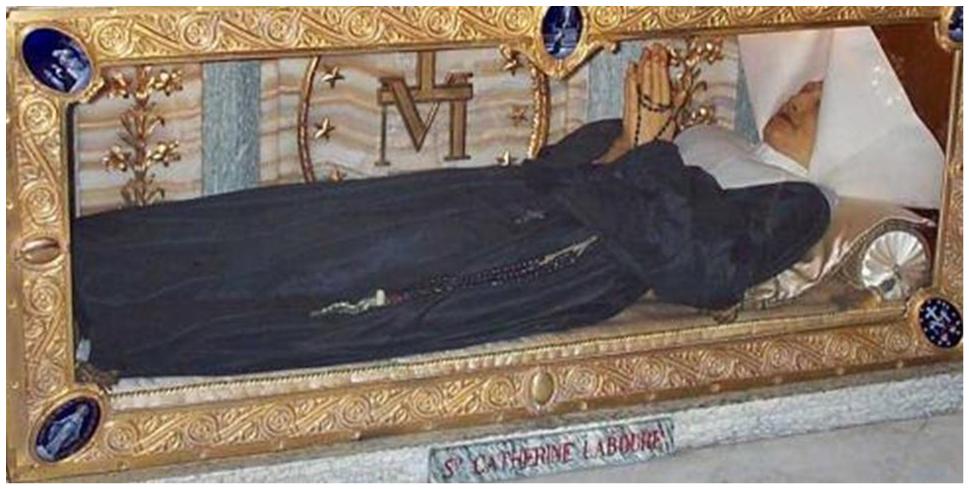In the night of 18th July 1830, 1st Appearance of the Virgin Mary, Catherine was woken up by a child ringed in a halo of light. She followed him into the church which was open and lit by countless candles. The child asked her to kneel next to the altar where the Virgin Mary was waiting for her with a message, a mixture of political and religious predictions.
In this message, she namely predicted the July 1830 revolution in France, the bloody political events of 1870, the death of Archbishop Darboy in 1871 and the ensuing political chaos. The Virgin Mary also announced the formation of 2 religious communities abroad, one in the United States (founded by Elisabeth-Ann Seton) and one in Austria, founded by Léopoldine de Brandis.
The Virgin Mary finally asked for a medal to be struck in her effigy.
7th November 1830 was the 2nd Appearance of the Virgin Mary. When with the other Sisters at evensong, Catherine saw another Appearance in the form of a tableau. She saw the Holy Virgin with outstretched arms and open hands from which shone beams of light symbolising the Graces Mary obtained for mankind. Written in golden letters were the words: “Oh Mary, conceived without sin, pray for us who appeal to you”. This second appearance of the Virgin Mary, clothed in a veil, white robe and silver-blue cloak is the current representation of the Virgin that was later to be called the Miraculous Virgin. The tableau turned around and Catherine saw the letter M crowned by a small cross and below the Holy Hearts of Jesus and Mary. The Virgin gave the following message: “a medal should be struck in this image. The people wearing it will receive My indulgence and those who piously say this short prayer will enjoy my very special protection”. Catherine of course talked about this appearance to Mr Aladel, who, although troubled, as some of the previous predictions had come true, refused to believe that the Virgin Mary had decided to appear to such a simpleminded, albeit very charitable, person like Catherine.
Catherine continued to dedicate her life to helping the poor and kept her secret that she only revealed to the Superior of her Congregation on the eve of her death. In this last appearance, the Virgin Mary repeated her request and stated her anger that Mr Aladel had not had the medal struck. She once more advised Catherine to open her heart to him. Mr Aladel then talked to the General Procurator of the Lazarists, Mr Etienne, his friend, who obtained a meeting with the Archbishop of Paris, Mgr de Quélen. Moved by this appearance, he decided to have such a medal struck without revealing the events leading to this new effigy.
The 1st medal: June 1832 The first medal was therefore made in 1832 by Order of Mgr Quélen, in agreement with Rome. In 1834, the medal was called the Miraculous Medal as it provided protection and helped cure illness. Certain conversions due to it, like that of a young Swiss banker, even became famous. In 1836 unexplained healings occurred in the United States, where the Miraculous Medal had been widely distributed and in Poland in 1837…. In 1839, 10 million medals were struck. The Miraculous Medal became a sign of protection in the Christian world. In 1858, during the first appearances of Lourdes, Catherine Labouré remembered that one of the wishes of the Virgin Mary had been to make the chapel on the rue du Bac a place of pilgrimage. Several texts mention that Bernadette Soubirous wore the Miraculous Medal during the first appearance of Lourdes.
Official recognition by the Church: Sister Catherine Labouré died on 31st December 1876, and was buried beneath the Reuilly Chapel near Paris. It was only on 27th July 1947, after a long administrative procedure and the examination of these Appearances by the Vatican to authenticate these events, that Pius XII canonised Catherine Labouré. Today, you can visit the Chapel at 140, rue du Bac in Paris.
